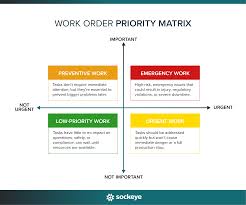Smart buildings are transforming the landscape of commercial real estate. These advanced structures, integrated with intelligent technology, are no longer a concept from science fiction but a reality that offers tangible benefits. By leveraging the latest tech, smart buildings create environments that are more efficient, secure, and sustainable.
For businesses, this shift represents a significant opportunity to lower costs, boost productivity, and meet ambitious environmental goals. This post will explore the key technologies driving the rise of smart buildings and detail the advantages they bring to modern enterprises. Understanding this will be crucial for any business leader looking to gain a competitive edge and future-proof their operations.
The Evolution of Intelligent Infrastructure
A smart building is a structure that uses a network of interconnected technologies to automate and optimize its operations. At its core, it relies on IoT devices, such as sensors and actuators, to collect real-time data about the building’s environment and usage. This data is then processed and analyzed by sophisticated software. Thanks to the integration of AI in smart buildings, these systems can now make more intelligent decisions, ranging from adjusting heating, ventilation, and air conditioning systems to managing security access and lighting levels.
The journey from traditional buildings to these smart counterparts has been a gradual evolution. Initially, building management was manual, with separate, non-integrated systems for lighting, heating, and security. The first wave of automation introduced Building Management Systems (BMS), which allowed for centralized control but offered limited intelligence. The real transformation began with the advent of affordable IoT sensors and powerful data analytics platforms. This technological convergence enabled buildings to become proactive rather than reactive.
Key milestones in this evolution include the development of open communication protocols that enabled different building systems to “talk” to each other, and the rise of cloud computing, which provided the infrastructure to store and analyze vast amounts of building data. Today, smart buildings feature a range of advanced capabilities, such as automated lighting that adjusts to natural daylight, intelligent HVAC systems that learn occupancy patterns to save energy, and AI-powered security cameras that can detect and respond to threats in real time. These features are no longer just amenities; they are becoming standard expectations for modern commercial spaces.
Key Business Benefits of Smart Buildings
Even though it’s been a quick rise for smart buildings, integrating this tech into commercial real estate provides a wealth of advantages that can directly impact a company’s bottom line and overall performance. Failing to embrace these intelligent environments can become a severely missed opportunity for businesses on the cutting edge of the tech world.
Cost Efficiency
One of the most compelling benefits of smart buildings is their ability to drive substantial cost savings. This is primarily achieved through intelligent energy management. Smart buildings use a network of sensors to monitor occupancy, temperature, and natural light levels, enabling HVAC and lighting systems to operate only when and where needed. Add to that the fact that you can implement these systems into any type of building, and the cost savings can become quite substantial. Just make sure you understand the key factors to consider when buying a prefabricated steel building or another cost-effective structure before proceeding with this venture.
Beyond energy savings, smart buildings also reduce operational costs through predictive maintenance. Instead of following a fixed maintenance schedule, sensors on equipment like elevators, HVAC units, and plumbing systems can monitor performance and detect early signs of wear or potential failure. This allows maintenance teams to address issues proactively before they lead to costly breakdowns and operational disruptions. Automating routine tasks, such as janitorial services, based on actual usage data further streamlines operations and frees up resources.
Enhanced Productivity
It’s no secret that the physical environment of your building directly impacts employee well-being and productivity. Smart buildings help with this by creating optimized workspaces that boost employee comfort and focus. By continuously monitoring and adjusting factors like temperature, air quality (monitoring CO2 and VOC levels), and lighting, these buildings ensure a consistently comfortable and healthy indoor environment. Personalized climate and lighting controls can even allow individual employees to tailor their immediate workspace to their preferences, leading to greater satisfaction and performance.
Smart buildings also facilitate more flexible and efficient work styles. Features like hot-desking platforms and smart meeting room booking systems help employees find and reserve available workspaces with ease. Real-time data on space utilization allows companies to understand how employees use their offices and reconfigure layouts to better support collaboration and individual work. This adaptability is especially valuable as businesses adopt hybrid work models, ensuring that office space is used effectively.
Sustainability and ESG Goals
Environmental, Social, and Governance (ESG) criteria are increasingly important for corporations. Smart buildings are a powerful tool for achieving sustainability targets and improving ESG performance. The significant energy efficiency gains directly translate to a reduced carbon footprint, helping companies meet their environmental commitments and comply with regulations. By optimizing resource consumption, smart buildings demonstrate a more tangible commitment to sustainability.
This focus on sustainability can also enhance a company’s brand reputation and attract environmentally conscious talent and investors. Reporting on energy savings and reduced emissions, backed by accurate data from the building’s systems, provides transparent and credible evidence of a company’s ESG efforts. In this way, a smart building becomes a visible symbol of corporate responsibility.
Improved Security
Security is a paramount concern for any business, and smart buildings offer advanced solutions to protect assets and personnel. Traditional security systems are often reactive, but smart security integrates AI and real-time monitoring to provide proactive threat detection. AI-powered video analytics can identify unusual activities, unauthorized individuals, or abandoned objects, triggering alerts for security personnel to investigate.
Smart access control systems provide more granular control over who can enter specific areas of a building and when. Instead of traditional keys or cards, these systems can use mobile credentials or biometrics for more secure and convenient access. They also create a detailed digital log of all entry and exit events, which is invaluable for security audits and compliance with regulatory requirements. This integrated approach ensures a safer and more secure environment for everyone in the building.
Data-Driven Decision Making
The vast amount of data generated by a smart building is one of its most valuable assets. By applying data analytics, businesses can gain deep insights into how their buildings perform and how employees utilize the space. This information enables data-driven decision-making for continuous improvement and strategic planning.
For example, space utilization analytics can reveal which areas of an office are most popular and which are underused. This insight can inform decisions about office layout, furniture allocation, and whether to expand or consolidate office space. Similarly, data on energy consumption patterns can identify further opportunities for efficiency gains. By leveraging these insights, businesses can optimize their real estate portfolio, reduce costs, and create more effective work environments.




